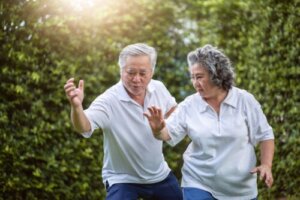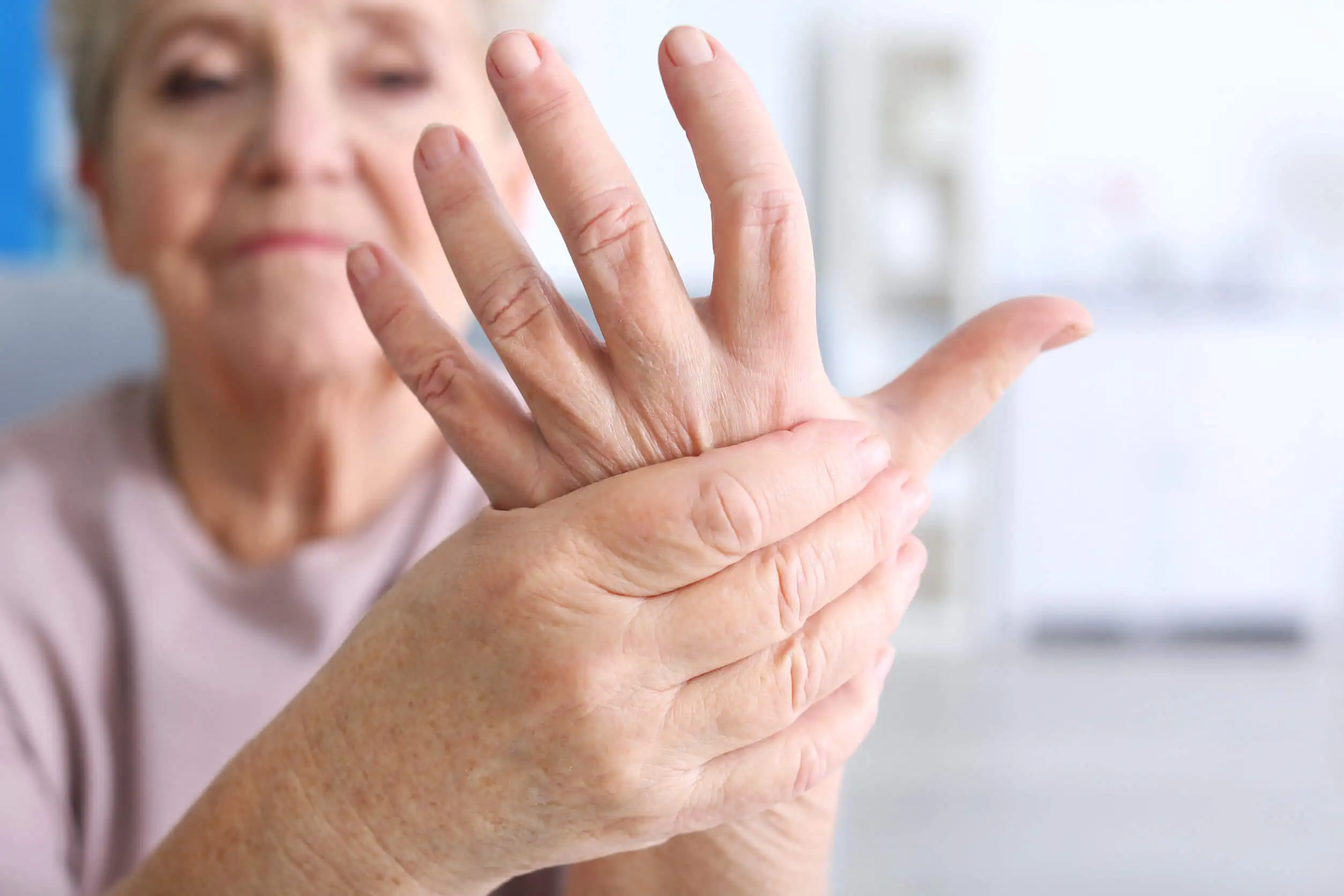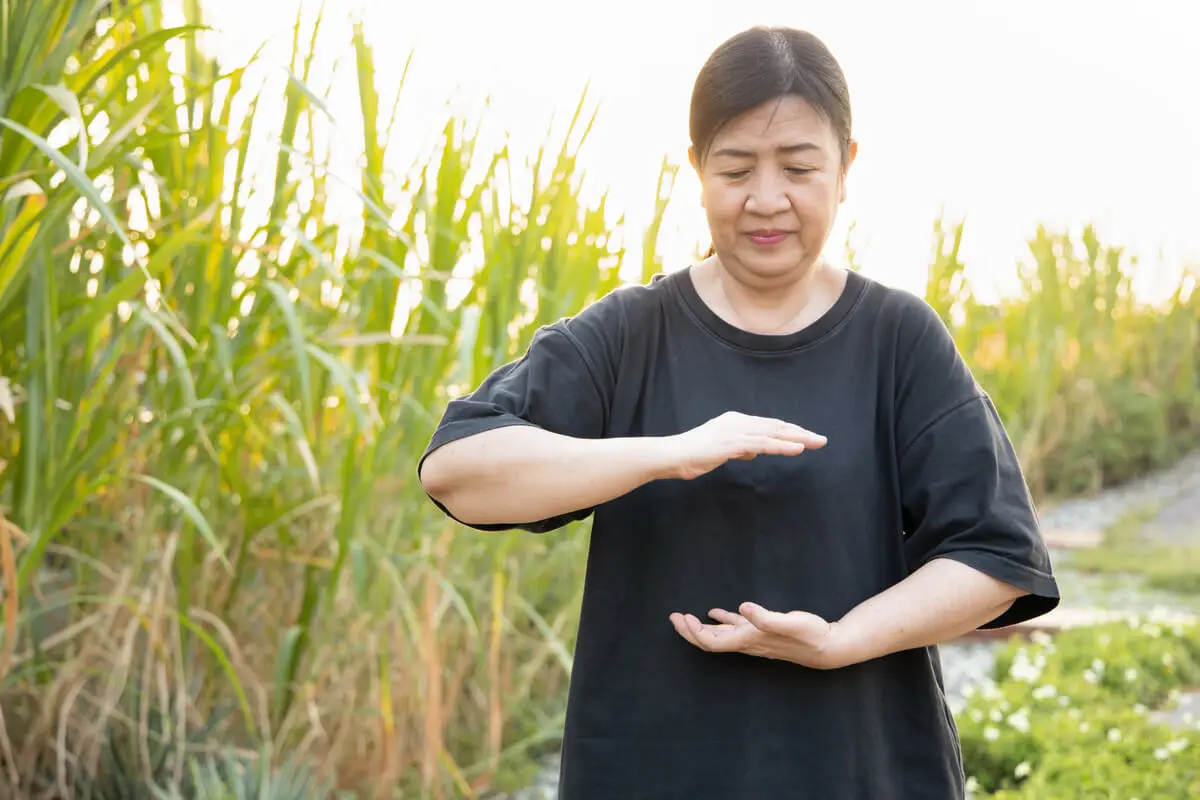The Benefits of Tai Chi for Arthritis Patients


Reviewed and approved by the nurse Leidy Mora Molina
There are hundreds of pieces of evidence regarding the advantages of exercise for physical health. That’s why some activities that involve moving the musculature and joint tissues can be used as complementary therapies in medicine. The practice of tai chi for arthritis patients is one such treatment.
The journal Endocrinology and Nutrition claims that exercise has a favorable impact on preventing the development of chronic diseases. A pathology such as arthritis increases the risk of complications if the patient has other problems, such as obesity.
The text points out that healthy eating and sports prevent excessive weight gain. In cases of arthritis, these excesses could lead to disability or incapacity, especially in older people.
What is arthritis?
Arthritis is the inflammation of one or more joints. This condition can be produced when the immune system attacks the body’s healthy tissues. Other times it’s caused by wear and tear on the joint surfaces.
The disease produces the following symptoms in the joints:
- Heat
- Reddening
- Deformation
- Swelling
- Stiffness
- Pain
There’s no definitive cure for arthritis, but there are treatments that can help you to cope with the diagnosis. According to the National Arthritis Coordinator, without proper care, the pathology triggers significant physical injuries and a marked deterioration in quality of life.
Osteoarthritis is the most common form. It’s caused by wear and tear of the joint cartilage.
However, the Centers for Disease Control and Prevention (CDC) notes that arthritis in general comprises multiple types:
- Gout
- Lupus
- Fibromyalgia
- Rheumatoid arthritis
Some variations of the disorder tend to impair organ function. The journal Medicine points out that the pattern of joint involvement is usually symmetrical and erosive.
This disorder can develop at any age, although it is most common in old age.

Get to know more: How Can You Improve the Symptoms of Osteoarthritis?
What is tai chi?
The National Cancer Institute defines tai chi as a form of traditional Chinese meditation and exercise for the mind and body that uses slow body movements and controlled breathing. The aim is to improve balance, flexibility, strength, and health.
This practice is beneficial for those suffering from rheumatic diseases. This is because tai chi is low impact and the muscles aren’t subjected to extreme efforts.
The movements are seen as a form of gymnastics or martial arts, suitable for pumping blood and fluids through the tendons, muscles, and joints.
The philosophy of tai chi is that health comes from the body’s vital energy and that as long as this circulates freely through the body, diseases are blocked. A study published in the International Journal of Environmental Research and Public Health suggests that it’s effective in attenuating the loss of bone mineral density in the lumbar spine and femoral neck regions, mainly in people with osteoarthritis.
Benefits of tai chi for arthritis patients
Due to their slow movements, these kinds of exercises improve balance and joint mobility, decrease tension, reduce stiffness and soothe aches and pains. So, how else does tai chi help arthritis patients? We’re going to tell you everything you need to know.
Works on your mind
In patients with joint degeneration, positive thinking is essential. To this end, tai chi promotes the power of the mind and integration with the body, to find and harness our inner strength.
Increases the strength of your knees
A project developed by Sports Medicine Research found that practicing tai chi for 24 weeks improves proprioception of the ankles and knees of patients with knee osteoarthritis.
For its part, the International Journal of Sport Science clarifies that the whole area of this discipline’s effectiveness on knees with arthritis raises some contradictions. However, the trend towards pain control and improvements in functionality is positive.
Promotes physical fitness
Tai chi is a cardiorespiratory exercise, so it helps to strengthen the heart and lungs, while promoting the production of histamine.
In the case of tissues and joints with arthritis, sufficient blood, fluids and oxygen are necessary for them to recover their health. This can be achieved through traditional martial arts.
In the same vein, the publication Clinical Rheumatology states that regular moderate physical activity is one of the measures that reduces the risk of cardiovascular mortality in patients with rheumatoid arthritis.
Read more: Strength Training and Hypertrophy Training: Four Differences
Strengthens muscles
The American Association of Retired Persons highlights that muscles are very important in maintaining balance, and tai chi is beneficial in this respect. The poses and movements train the body to prevent falls.
Regular sessions intensify muscle strength and, therefore, the joints will be protected and more stable. In this sense, tai chi minimizes the risk of fractures.
Contributes to flexibility
These Chinese exercises are linked to the reduction of joint stiffness and flexibility, two fundamental points to alleviate the painful crises of arthritis. How does it achieve this? Well, when joints begin to move smoothly, tendons and muscles increase elasticity.
Corrects posture
Body posture is impaired in patients with osteoarthritis. With tai chi-type exercises you correct the posture.

Apart from “tai chi” for arthritis patients, what other therapies help?
According to the Spanish Journal of Rheumatology, alternative therapies that could help in rheumatic processes have to do with mind/body techniques and the consumption of glucosamine and ginger extracts. Specialists consider that copper bracelets and magnetotherapy are not useful.
Among the complementary treatments to conventional medicine which show acceptable results, an issue of Arthritis and Rheumatology highlights the following:
- Cold and heat: Hot water compresses relax the muscles and help blood circulate better, while cold water compresses reduce inflammation by constricting blood vessels and replacing pain sensations.
- Acupuncture: This is the insertion of microneedles into the skin, following the energy meridians, with the intention of correcting the flow of qi, equivalent in Chinese to the vital force.
- Hydrotherapy: Baths in bathtubs or tubs for therapeutic purposes.
- Chiropractic medicine: By applying rapid and controlled force, it amplifies the range and quality of movement in injured areas.
Is there any risk in practicing “tai chi” for patients with arthritis?
Understanding the physical limitations of people with rheumatoid disease, it’s best to select tai chi exercises that don’t increase the likelihood of injury. While more research is needed on the effects of Chinese exercise, what is true is that it doesn’t exacerbate symptoms and, at the same time, expands joint movement.
All cited sources were thoroughly reviewed by our team to ensure their quality, reliability, currency, and validity. The bibliography of this article was considered reliable and of academic or scientific accuracy.
- Alegre de Miquel C. Terapias alternativas en reumatología. Usos y abusos. Revista Española de Reumatología. Vol. 29. Núm. 1. pp. 1-3. España; 2002. https://www.elsevier.es/es-revista-revista-espanola-reumatologia-29-articulo-terapias-alternativas-reumatologia-usos-abusos-13026327
- Albers U, Jiménez Martín PJ, López Díaz A, Meléndez Ortega A. Beneficios del Tai Chi Chuan en la osteoartritis, el equilibrio y la calidad de vida. Revista Internacional de Ciencias del Deporte. Vol. 9. Núm. 32. pp. 181-199. España; 2013. https://www.redalyc.org/pdf/710/71025691007.pdf
- Álvarez de Mon-Soto M, Martín Holguera R, Pérez Gómez A, Turrión Nieves A. Artritis reumatoide. Medicina. Vol. 12. Núm. 28. pp. 1615-1625. España; 2017. https://www.mendeley.com/catalogue/de9ab887-6950-3f1f-9d92-f83c2907f09c/?utm_source=desktop&utm_medium=1.19.4&utm_campaign=open_catalog&userDocumentId=%7Bde0f704a-0ec4-4a16-849f-d6726a1124c5%7D
- Artritis Reumatoide. Coordinadora Nacional de Artritis. España. http://www.conartritis.org/todo-sobre-artritis/que-es-la-ar/
- Calle Pascual L, Cuesta Hernández M. Beneficios del ejercicio físico en población sana e impacto sobre la aparición de enfermedad. Endocrinología y Nutrición. Vol. 60. Núm. 6. pp. 283-286. España; 2013. https://www.elsevier.es/es-revista-endocrinologia-nutricion-12-articulo-beneficios-del-ejercicio-fisico-poblacion-S1575092213001332
- Chen K, Chen X, Luo L, Shu Y, Wang C, Zhao X, Zou L. El efecto de la práctica de Taichi en la atenuación de la pérdida de densidad mineral ósea: una revisión sistemática y metanálisis de ensayos controlados aleatorios. Revista Internacional de Investigación Ambiental y Salud Pública. Vol. 14. Núm. 9. Suiza; 2017. https://www.mdpi.com/1660-4601/14/9/1000
- Fifield K. Sigamos la corriente del taichí. Asociación Americana de Personas Retiradas. Estados Unidos; 2019. https://www.aarp.org/espanol/salud/vida-saludable/info-2019/beneficios-de-practicar-tai-chi.html
- González Gay M, González Juanatey C. Enfermedad cardiovascular en artritis reumatoide. Importancia y tratamiento clínico.Reumatología Clínica. Vol. 5. Núm. 3. pp. 95-97. España; 2009. https://www.reumatologiaclinica.org/es-enfermedad-cardiovascular-artritis-reumatoide-importancia-articulo-S1699258X09000308
- Histamina. Instituto Nacional del Cáncer. Estados Unidos. https://www.cancer.gov/espanol/publicaciones/diccionarios/diccionario-cancer/def/histamina
- Hu X, Lai Z, Wang L. Efectos del ejercicio de Taichi en la propiocepción de rodilla y tobillo entre personas con osteoartritis de rodilla. Investigación en Medicina Deportiva. Vol. 28. Núm. 2. pp. 268-278. Inglaterra; 2020. https://www.mendeley.com/catalogue/64f4914c-6d63-370a-81b3-255bf7c43e68/?utm_source=desktop&utm_medium=1.19.4&utm_campaign=open_catalog&userDocumentId=%7B06fe42c7-6520-4216-8352-c779c1029a9a%7D
- Tai Chi. Instituto Nacional del Cáncer. Estados Unidos. https://www.cancer.gov/espanol/publicaciones/diccionarios/diccionario-cancer/def/tai-chi
- Terapias complementarias y alternativas para la artritis. Artritis y Reumatología. Puerto Rico; 2021. https://artritispr.com/articulos/terapias-complementarias-y-alternativas-para-la-artritis/ https://artritispr.com/articulos/terapias-complementarias-y-alternativas-para-la-artritis/
- Tipos de artritis. Centros para el Control y la Prevención de Enfermedades. Estados Unidos; 2019. https://www.cdc.gov/arthritis/spanish/conceptos-basicos/tipos-de-artritis.htm#:~:text=La%20artritis%20comprende%20m%C3%A1s%20de,la%20fibromialgia%20y%20la%20gota.
This text is provided for informational purposes only and does not replace consultation with a professional. If in doubt, consult your specialist.








